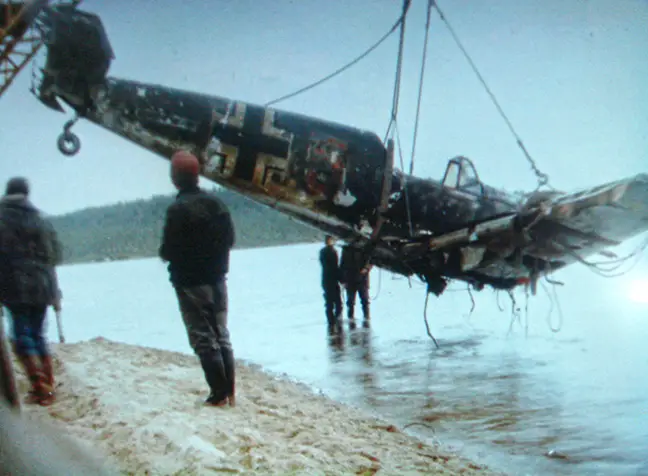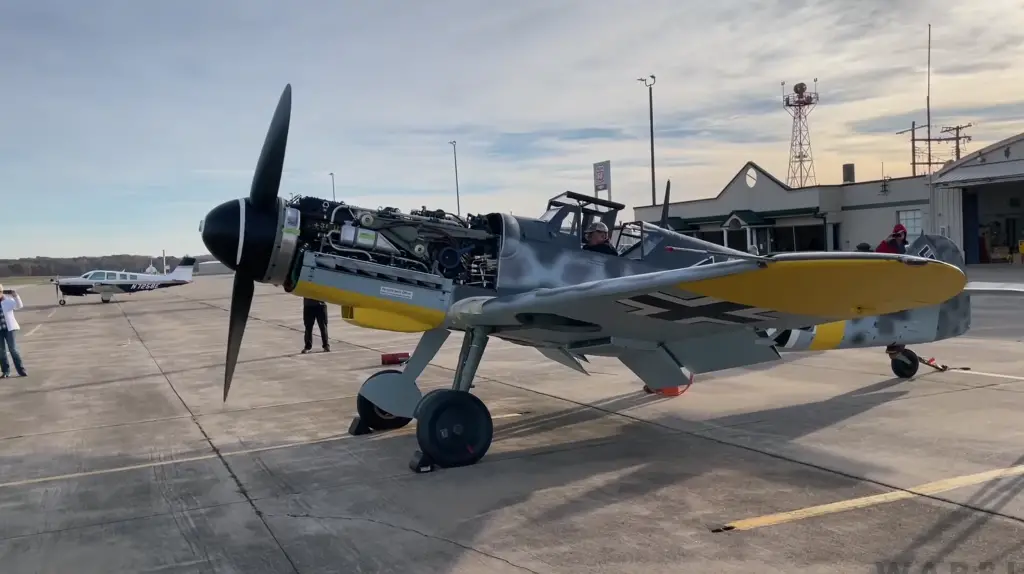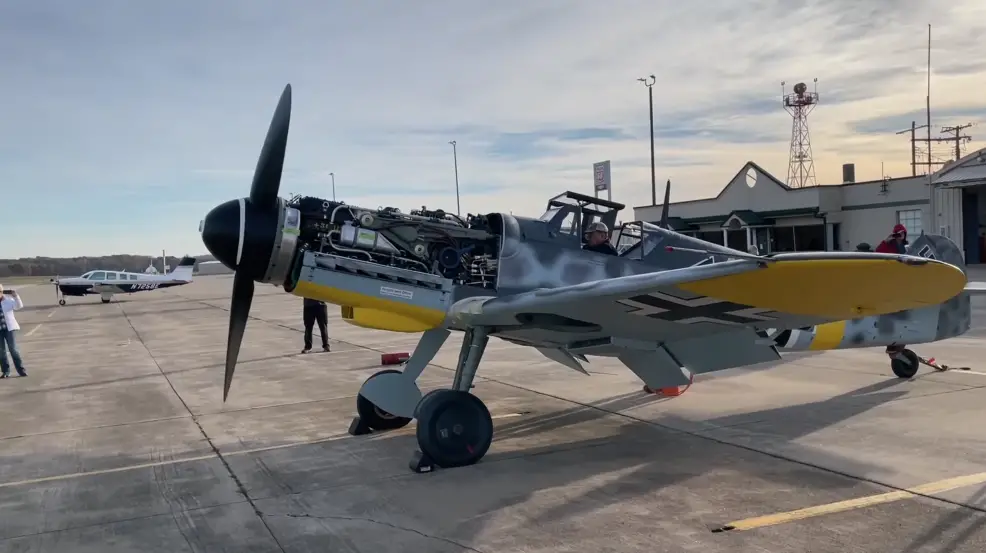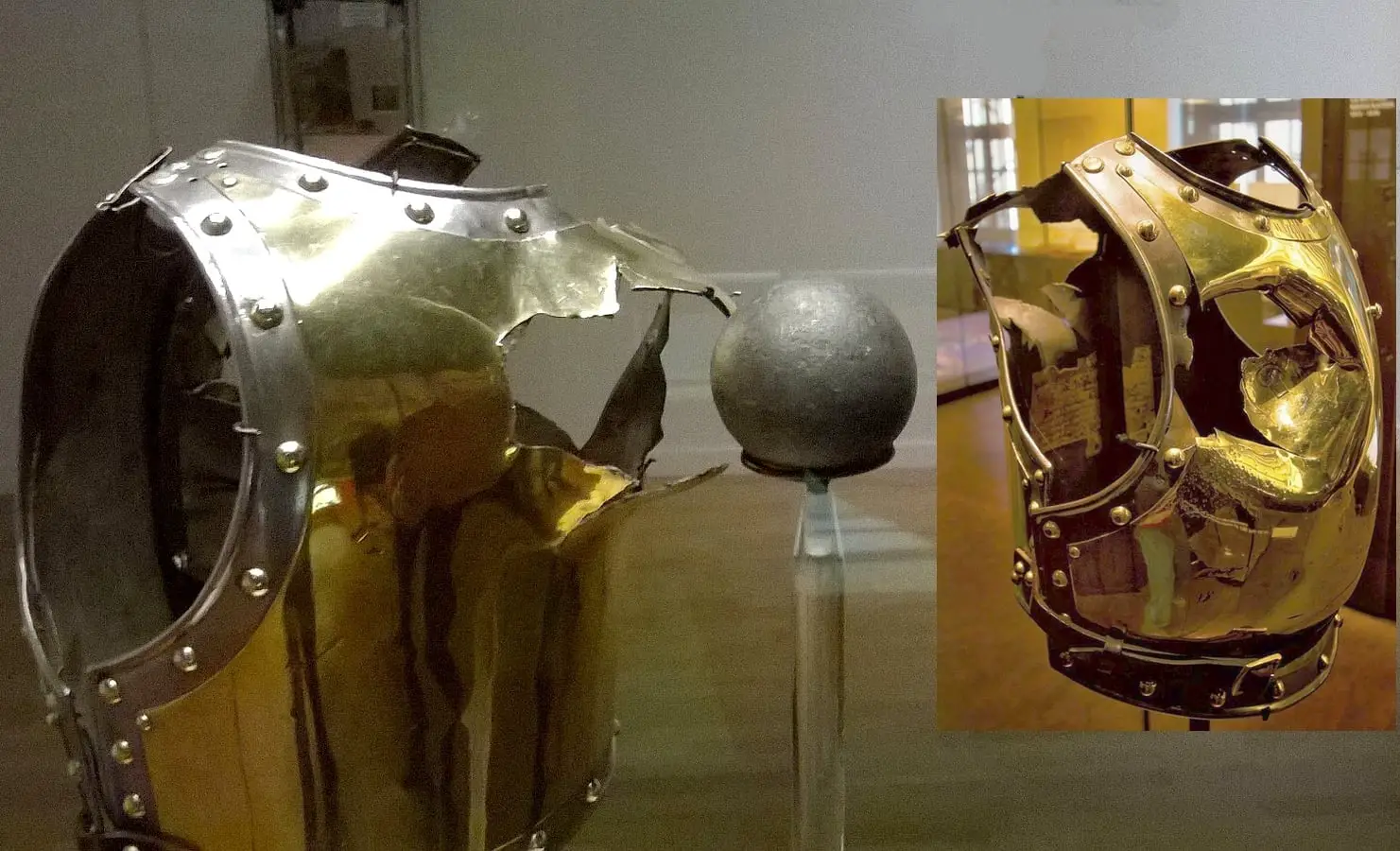Bf 109, an icon of aviation. The machine was recovered from Lake Swiblo in Russia in the early 1980s.
As we know, artifacts and memorabilia from World War II are prized by collectors all around the globe; everything from weapons to helmets to badges are coveted, and sometimes fetch high prices, prices in their millions.
Scroll Down for Video

But not all collectors have the resources, the room or the inclination, to spend almost a full decade overseeing the restoration of a vintage plane that once was among the ranks of aircraft in Germany’s Luftwaffe.
As you can see in the image of the wreck at the top of the article, it was in relatively good condition considering it had been sitting on a lake bed for 50 years.

Content
Thanks to the efforts of Midwest Aero Restorations Inc., based in Danville, Illinois, an aircraft forced down over the Russian front in 1944 now sits fully restored to its former glory, not yet able to fly but with an engine that hums just as it did when it rolled off the Messerschmitt assembly line.
Restoration
It is a Messerschmitt Bf 109G-6, and its engine sprang to life on November 16th, bringing great satisfaction to the crew that has been updating it for approximately 10 years. In a recent announcement about the plane, company officials suggested that a trial flight is not far off, likely happening within the next few months.

The company president, Michael Vadeboncoeur, described the recent engine tests as a “major milestone” in the aircraft’s preparedness for flight.
The fighter plane had a long, circuitous journey before arriving in America for restoration.
The Germans riddled the plane with bullets on that February day before abandoning it, hoping the damage would make it worthless to the Allies.
Abandoned
Their plan worked, and once the ice melted during spring thaw, the plane sank to the bottom of Lake Swiblo, near the Russian-Estonia border. It stayed there for many years. It was not until the late 1980s, when relations between Russia and the west began to ease thanks to glasnost, that a thriving trade in war memorabilia mushroomed and the plane became a much sought after item for collectors.

The Bf 109 was initially recovered in 1990 was one of the first warbirds to be recovered in this new rush for military ‘gold’. It was raised from the lake bed by a dedicated team of Russian wreck enthusiasts who worked for a small Moscow based company “Retrotechnika”,
Ed Zalesky, a collector from British Columbia, Canada bought 410077 and offered it for sale. It was purchased by a company in Australia, which then sold it to a firm in Germany. It sat in storage in its home country, untended, for several years, until finally it was purchased by Midwest in 2012 and taken to the United States.
The project has taken so long to complete because the company had to scour the world for parts that would bring the plane back to its original look and function. All components are true to the period, including the fuel tank, radios, oxygen bottles and more.
Eastern Front
The plane’s engine was damaged badly in 1944, and so for expertise and experience, Midwest turned to Mike Nixon, owner of Vintage Aero Engines, based in California. Nixon and his team used the original German engine specifications as their guide when reconstructing the engine. It has been put through its paces several times now, and all involved are extremely optimistic that soon the plane will be airborne.
Very little is known about the fighter plane’s war record; documents detailing the Luftwaffe’s planes – where they fought and how many Allied aircraft they shot down on the Eastern front – were largely ruined in the fighting or destroyed by the Germans as the conflict drew to a close.
However, historians told Midwest company officials that, because it was found in the lake, the aircraft was likely part of an aerial assault on the Russian front. Little more than that can be divined about the plane’s battle record.
If you like this article, then please follow us on Facebook, Instagram
To ensure that the Bf-109 had the proper markings, in keeping with how it would have looked in 1943, restorers turned to historians who have detailed knowledge about the Luftwaffe, and the colours its planes were given depending on which group they belonged to.
The plane’s underside is mostly yellow, with some black and grey on top, all of which are authentic shades it carried during the war.
Another Article From Us: THE V8 POWERED AIR RAID SIREN
Anyone interested in following the aircraft’s progress, and seeing it head to the skies, can look up Midwest at: www.midwestaero.com.
When the time comes for the Bf 109 to take flight, the company plans to air the test online.





